Chickpea flour, also known as gram flour or besan, is a versatile ingredient that can be used in a variety of culinary and cosmetic applications. One of the most popular uses of chickpea flour is as a base for a face mask. Chickpea flour face masks have been used for centuries in India and other parts of Asia as a natural way to brighten and rejuvenate the skin.
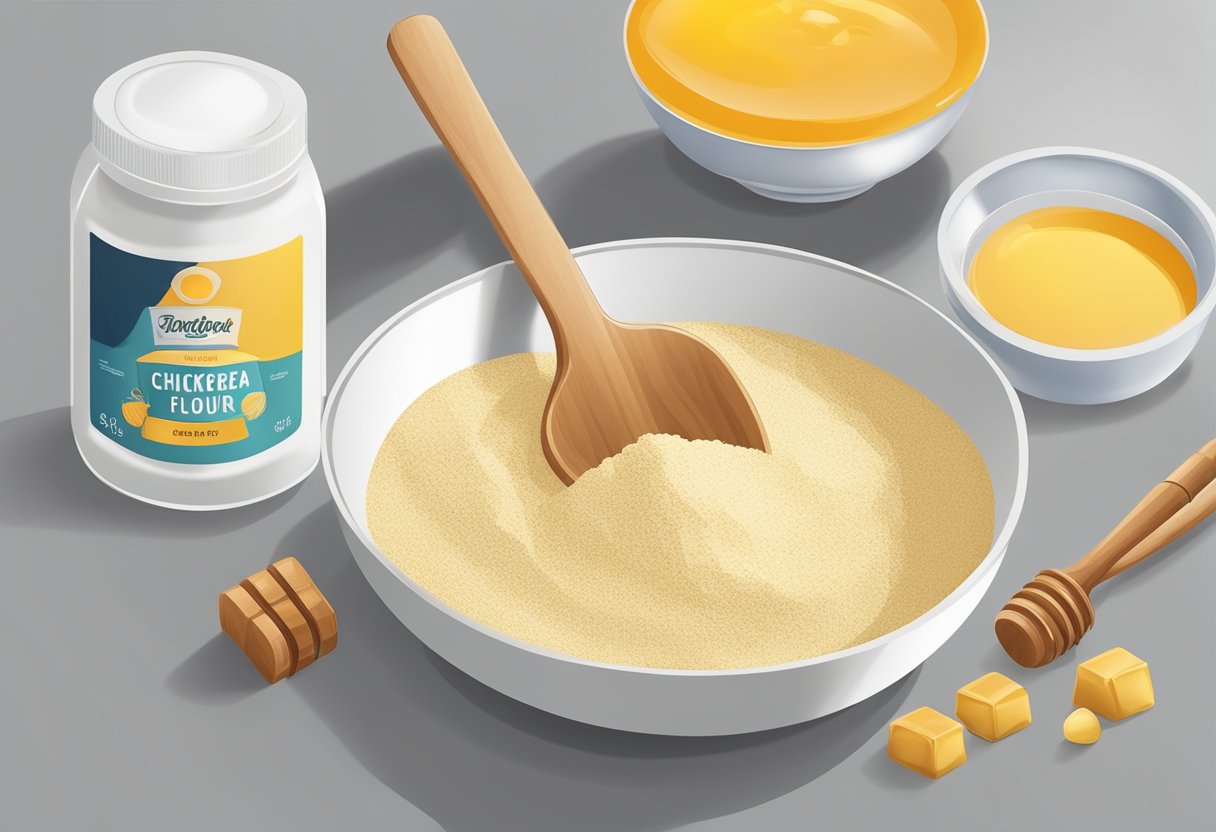
Making a chickpea flour face mask is a simple and affordable way to achieve glowing, healthy-looking skin. Chickpea flour is rich in vitamins and minerals that help to nourish and protect the skin, while its gentle exfoliating properties help to remove dead skin cells and unclog pores. When combined with other natural ingredients such as yogurt, honey, and lemon juice, chickpea flour can help to reduce the appearance of blemishes, brighten the complexion, and improve overall skin texture.
Whether you’re looking for a quick and easy DIY beauty treatment or a natural alternative to commercial skincare products, a chickpea flour face mask is a great option. With just a few simple ingredients and a little bit of time, you can create a luxurious spa experience in the comfort of your own home. In the following sections, we will explore the benefits of chickpea flour for the skin, as well as some of the best recipes for making your own chickpea flour face mask.
Benefits of Chick Pea Flour for Skin
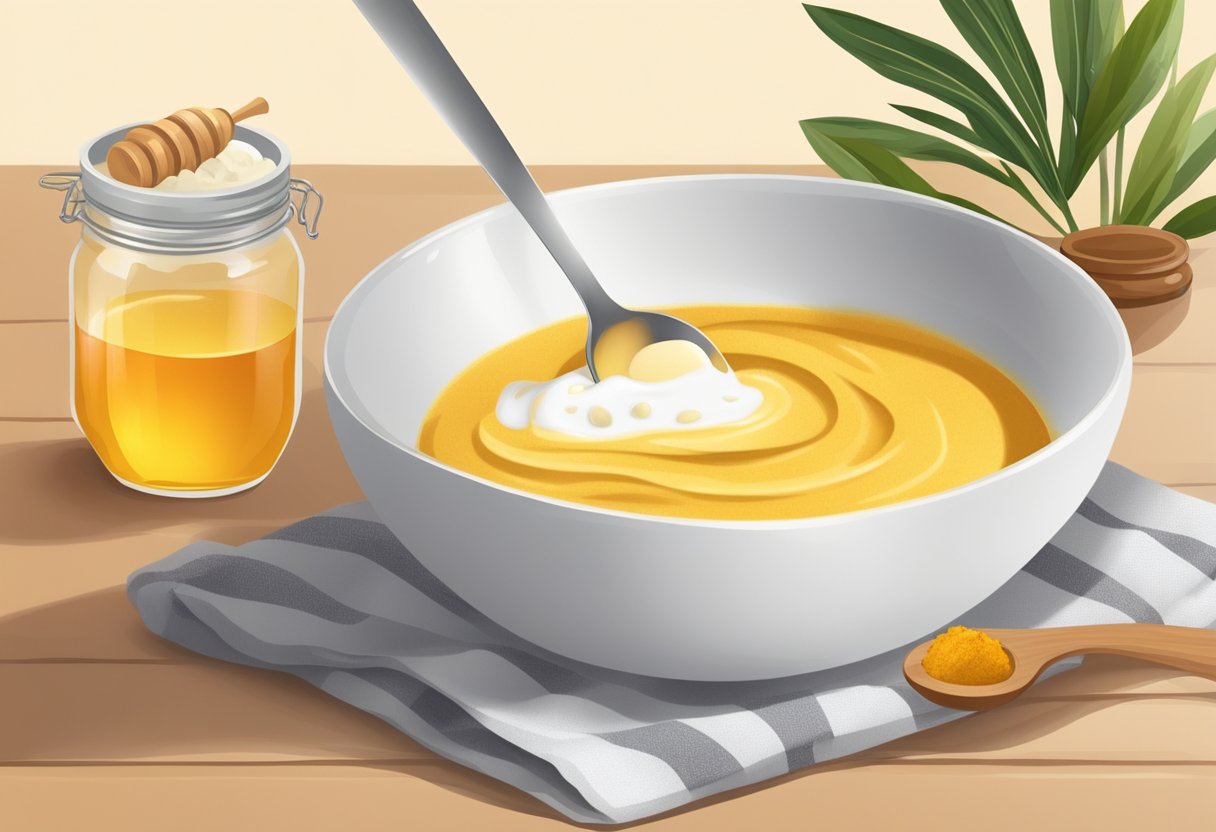
Chickpea flour, also known as gram flour, is a natural ingredient that has been used for centuries in beauty treatments. It is rich in nutrients such as protein, vitamins, and minerals that are beneficial for the skin. Here are some of the benefits of using chickpea flour for skin:
1. Exfoliation
Chickpea flour is an excellent natural exfoliator that helps to remove dead skin cells, dirt, and oil from the skin’s surface. It gently exfoliates the skin without causing any irritation, leaving the skin soft and smooth.
2. Skin Brightening
Chickpea flour is also known for its skin-brightening properties. It helps to remove tan, dark spots, and pigmentation from the skin, making it look brighter and more even-toned. Chickpea flour can be used in combination with other natural ingredients such as lemon juice, turmeric, and honey to make a face mask that brightens the skin.
3. Acne Prevention
Chickpea flour is an effective natural remedy for preventing acne breakouts. It helps to absorb excess oil from the skin and unclog pores, which are the main causes of acne. Chickpea flour can be used in combination with other natural ingredients such as neem powder, sandalwood powder, and rose water to make a face mask that prevents acne.
4. Hair Removal
Chickpea flour is also known for its hair removal properties. It helps to remove fine facial hair and makes the skin smooth and soft. Chickpea flour can be used in combination with other natural ingredients such as turmeric, milk, and honey to make a face mask that removes facial hair.
In conclusion, chickpea flour is a natural ingredient that has many benefits for the skin. It is a versatile ingredient that can be used in various face masks to achieve different skin goals. Incorporating chickpea flour into your skincare routine can help to keep your skin healthy, bright, and youthful-looking.
Ingredients Needed

Making a chickpea flour face mask is a simple and effective way to promote healthy and glowing skin. The ingredients for this mask are easily accessible and affordable.
Here are the ingredients needed to make a chickpea flour face mask:
-
Chickpea Flour: Also known as gram flour, this is the main ingredient in the face mask. It is rich in protein and helps to absorb excess oil from the skin.
-
Turmeric: This spice is known for its anti-inflammatory properties and is a natural skin brightener. It helps to reduce dark spots and blemishes.
-
Yogurt: Yogurt contains lactic acid, which helps to exfoliate and brighten the skin. It also has a cooling effect that soothes irritated skin.
-
Honey: Honey is a natural humectant, which means it helps to retain moisture in the skin. It also has antibacterial properties that help to fight acne.
-
Aloe Vera Juice: Aloe vera juice is a natural moisturizer that helps to soothe and hydrate the skin. It also has anti-inflammatory properties that help to reduce redness and irritation.
-
Milk Cream: Milk cream is rich in lactic acid and helps to exfoliate and brighten the skin. It also has a moisturizing effect that helps to keep the skin soft and supple.
-
Lemon Juice: Lemon juice is a natural skin brightener that helps to reduce dark spots and blemishes. It also has astringent properties that help to tighten the skin.
Preparing the Chick Pea Flour
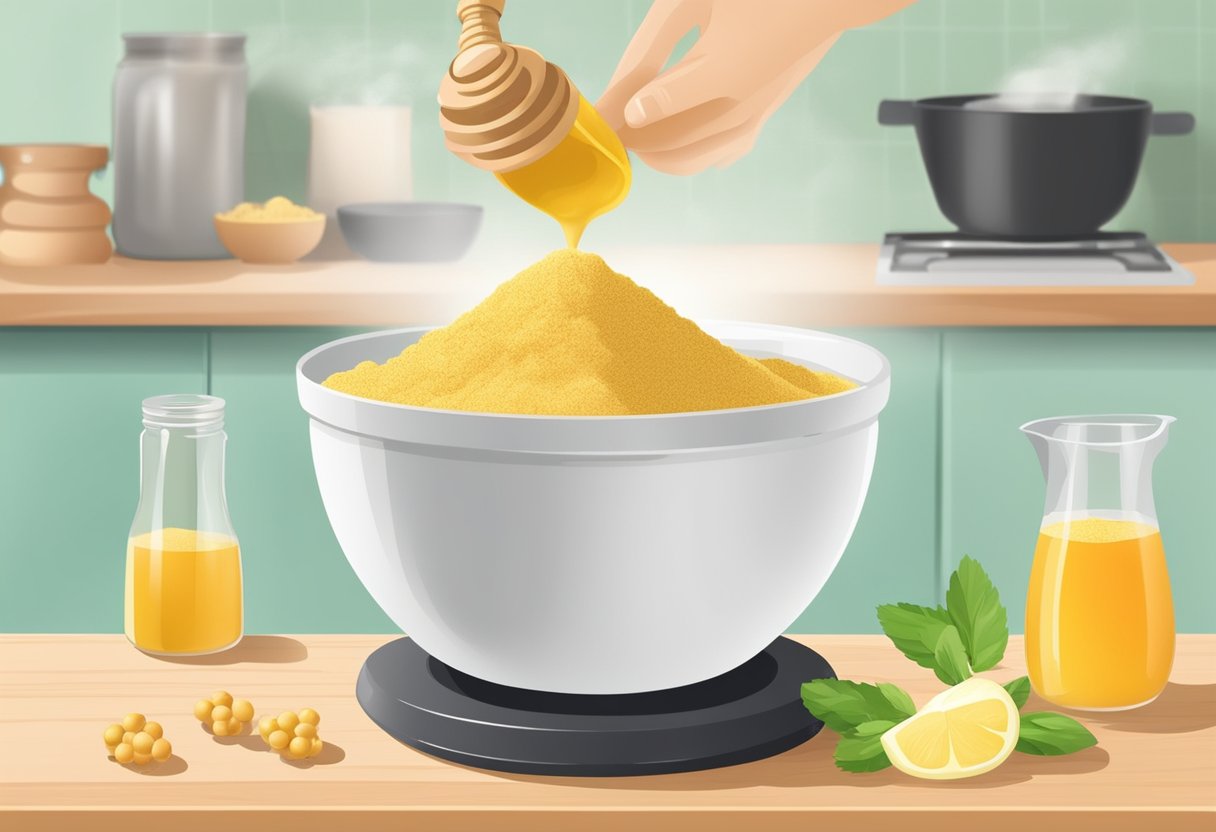
Chickpea flour is the main ingredient in making a chickpea flour face mask. It is a versatile ingredient that is easy to make at home. Here are some steps to prepare chickpea flour:
-
Selecting the Chickpeas: Choose high-quality chickpeas that are free from any dirt, rocks, or debris. It is recommended to purchase organic chickpeas to avoid any harmful chemicals.
-
Cleaning and Soaking: Rinse the chickpeas thoroughly and soak them in water for at least 8 hours or overnight. This helps to soften the chickpeas and make them easier to blend.
-
Blending the Chickpeas: Drain the soaked chickpeas and pat them dry. Add the chickpeas to a high-speed blender or food processor and blend them until they become a fine powder. You may have to pause throughout the blending process to stir and make sure all the chickpeas are evenly ground.
-
Sifting the Flour: Once the chickpeas are ground into a fine powder, sift the flour through a fine-mesh sieve or a flour sifter to remove any large bits. This will ensure that the flour is smooth and fine.
-
Storing the Flour: Store the chickpea flour in an airtight container and keep it in a cool, dry place. Chickpea flour can be stored for up to two months.
By following these simple steps, you can prepare fresh and high-quality chickpea flour at home. This flour can be used not only for face masks but also in various recipes such as pancakes, bread, and falafel.
Mixing the Ingredients

To make a chickpea flour face mask, the first step is to gather all the required ingredients. Chickpea flour, also known as gram flour, is the main ingredient for this mask. Other ingredients include turmeric, honey, yogurt, aloe juice, and lemon juice.
To begin, take a small bowl and mix 2 teaspoons of chickpea flour with 1 teaspoon of turmeric. Mix the two ingredients thoroughly to form a soft and creamy paste.
Next, add 1/2 teaspoon of honey to the mixture and mix well. Honey is a natural humectant, which means it helps to retain moisture and keep the skin hydrated.
After that, add 3 teaspoons of plain yogurt to the mixture. Yogurt contains lactic acid, which helps to exfoliate the skin and remove dead skin cells.
Finally, add a few drops of freshly squeezed lemon juice to the mixture. Lemon juice is rich in vitamin C, which helps to brighten the skin and reduce dark spots.
Mix all the ingredients together until you get a smooth and consistent paste. If the mixture is too thick, you can add a little bit of aloe juice to thin it out.
Once you have mixed all the ingredients, your chickpea flour face mask is ready to use. Apply the mask evenly over your face and leave it on for 15-20 minutes. Rinse off with warm water and pat your face dry with a soft towel.
It is recommended to use this mask once or twice a week for best results. With regular use, this chickpea flour face mask can help to brighten the skin, reduce acne, and improve overall skin texture.
Application Process

To apply the chickpea flour face mask, follow these simple steps:
-
Start by washing your face with warm water and a gentle cleanser to remove any dirt or makeup.
-
Mix two tablespoons of chickpea flour with a teaspoon of turmeric powder and a few drops of honey in a small bowl.
-
Add enough water to the mixture to form a smooth paste. If the mixture is too thick, add more water.
-
Apply the mask evenly to your face, avoiding the eye area.
-
Leave the mask on for 15-20 minutes or until it dries completely.
-
Once the mask is dry, gently rinse it off with warm water.
-
Pat your face dry with a clean towel and apply your favorite moisturizer.
It is recommended to use the chickpea flour face mask once a week for best results. Be sure to patch test the mask on a small area of your skin before applying it to your entire face to ensure you are not allergic to any of the ingredients.
Overall, using a chickpea flour face mask can help improve the appearance of your skin by reducing inflammation and promoting a healthy, glowing complexion.
Duration and Frequency of Use

When using a chickpea flour face mask, it is important to consider the duration and frequency of use to avoid any adverse effects. Chickpea flour is a gentle and natural ingredient, but excessive use can lead to dryness, irritation, and inflammation of the skin.
It is recommended to use the chickpea flour face mask once or twice a week for best results. Applying it more frequently can lead to over-exfoliation, which can damage the skin’s protective barrier and cause redness, itching, and flaking.
The duration of use for the chickpea flour face mask should be limited to 10-15 minutes. Leaving the mask on for too long can cause the skin to become dry and dehydrated, leading to fine lines and wrinkles. It is important to rinse the mask off thoroughly with lukewarm water and apply a moisturizer to keep the skin hydrated and supple.
In summary, using a chickpea flour face mask once or twice a week for 10-15 minutes can help to exfoliate and brighten the skin without causing any harm. It is important to be mindful of the frequency and duration of use to maintain healthy and glowing skin.
Aftercare and Skin Moisturization
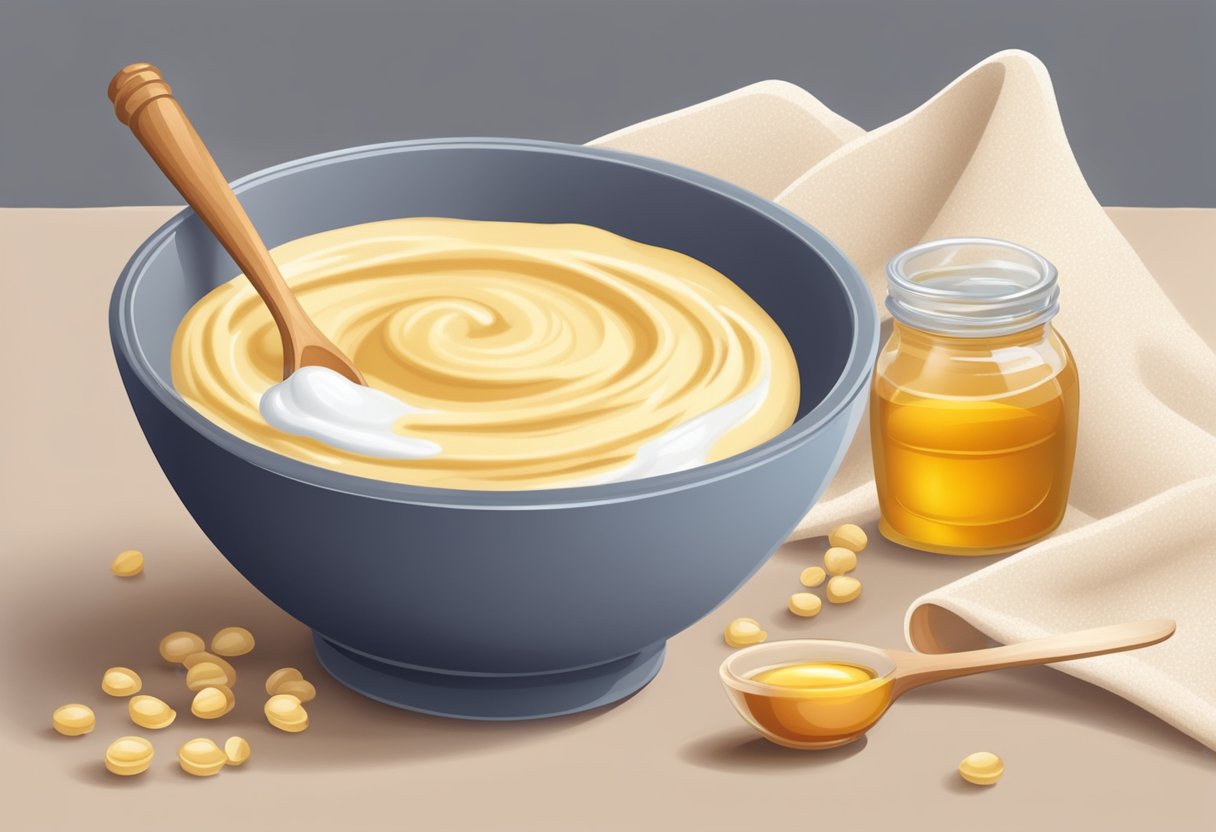
After using a chickpea flour face mask, it is important to take proper care of the skin to maintain the benefits of the mask. Here are a few tips for aftercare and skin moisturization:
Moisturize
After using the chickpea flour face mask, it is important to moisturize the skin. Moisturizing helps to keep the skin hydrated and prevent it from becoming dry and flaky. A good moisturizer should be applied after the mask has been washed off. This will help to lock in the moisture and keep the skin soft and supple.
Avoid Harsh Products
It is important to avoid using harsh products on the skin after using a chickpea flour face mask. This includes products that contain alcohol, fragrances, and other harsh chemicals. These products can irritate the skin and cause it to become dry and flaky.
Drink Plenty of Water
Drinking plenty of water is important for maintaining healthy skin. After using a chickpea flour face mask, it is important to drink plenty of water to keep the skin hydrated. Water helps to flush out toxins from the body and keep the skin looking healthy and radiant.
Use Sunscreen
After using a chickpea flour face mask, it is important to protect the skin from the sun. Sunscreen should be applied to the skin before going outside. This will help to protect the skin from harmful UV rays and prevent it from becoming damaged.
By following these tips, the skin will remain healthy and radiant after using a chickpea flour face mask.
Storage and Shelf Life of the Face Mask
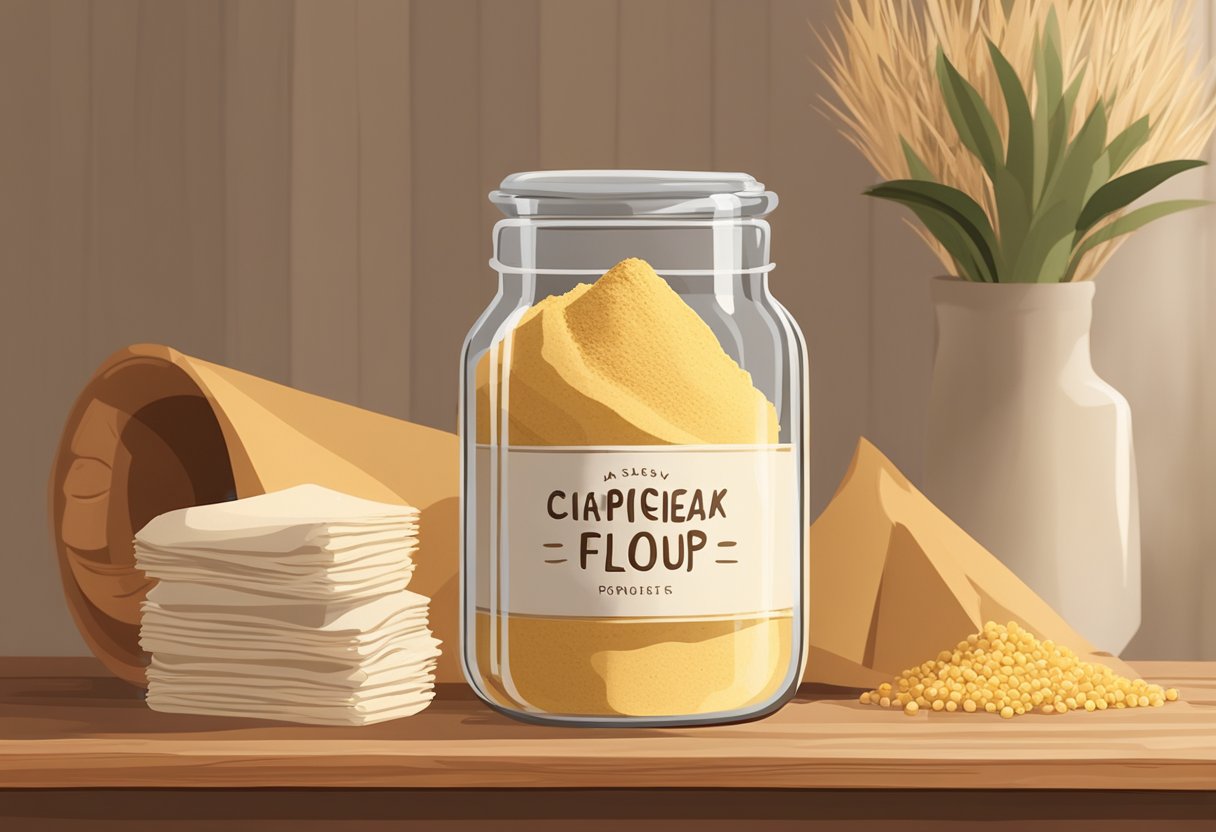
Chickpea flour face masks are an excellent option for those looking for a natural and affordable way to improve their skin’s appearance. However, it’s important to store and use them correctly to ensure their effectiveness and longevity.
When it comes to storage, chickpea flour face masks should be kept in a cool, dry place away from direct sunlight and sources of heat. A drawer or cupboard in the bathroom is a good option, but make sure it’s not too close to the shower or hair dryer. It’s also important to keep the face mask in an airtight container to prevent moisture from getting in, which can lead to mold growth.
In terms of shelf life, chickpea flour face masks can last up to six months if stored properly. However, it’s important to check for any signs of spoilage before using the mask. If the mask has a strange smell or appearance, it’s best to discard it and make a fresh batch.
It’s also worth noting that the shelf life of other ingredients used in the face mask, such as turmeric or aloe juice, may vary. Always check the expiration date of these ingredients before using them in your face mask.
By following these storage and shelf life tips, you can ensure that your chickpea flour face mask remains effective and safe to use.
Precautions and Skin Sensitivity Test

Before applying chickpea flour face mask, it is important to take necessary precautions to avoid any adverse reactions. Chickpea flour is generally safe for most skin types, but it is always a good idea to do a patch test to ensure there are no allergic reactions.
To perform a skin sensitivity test, mix a small amount of chickpea flour with water to make a paste. Apply the paste to a small area on the inner part of your arm and leave it on for 10-15 minutes. If you experience any redness, itching, or irritation, wash the area with water and do not use chickpea flour on your face.
It is also important to note that if you have sensitive skin, you should avoid using chickpea flour face mask as it may cause irritation or redness. Additionally, if you have acne-prone skin, it is recommended to consult with a dermatologist before using chickpea flour face mask.
Moreover, it is advisable to use organic chickpea flour to avoid any harmful chemicals or preservatives that may cause skin irritation. Always read the label and check the expiration date before using any chickpea flour for face mask purposes.
Lastly, it is recommended to avoid using chickpea flour face mask on open wounds, cuts, or burns as it may cause further irritation or infection.
Frequently Asked Questions
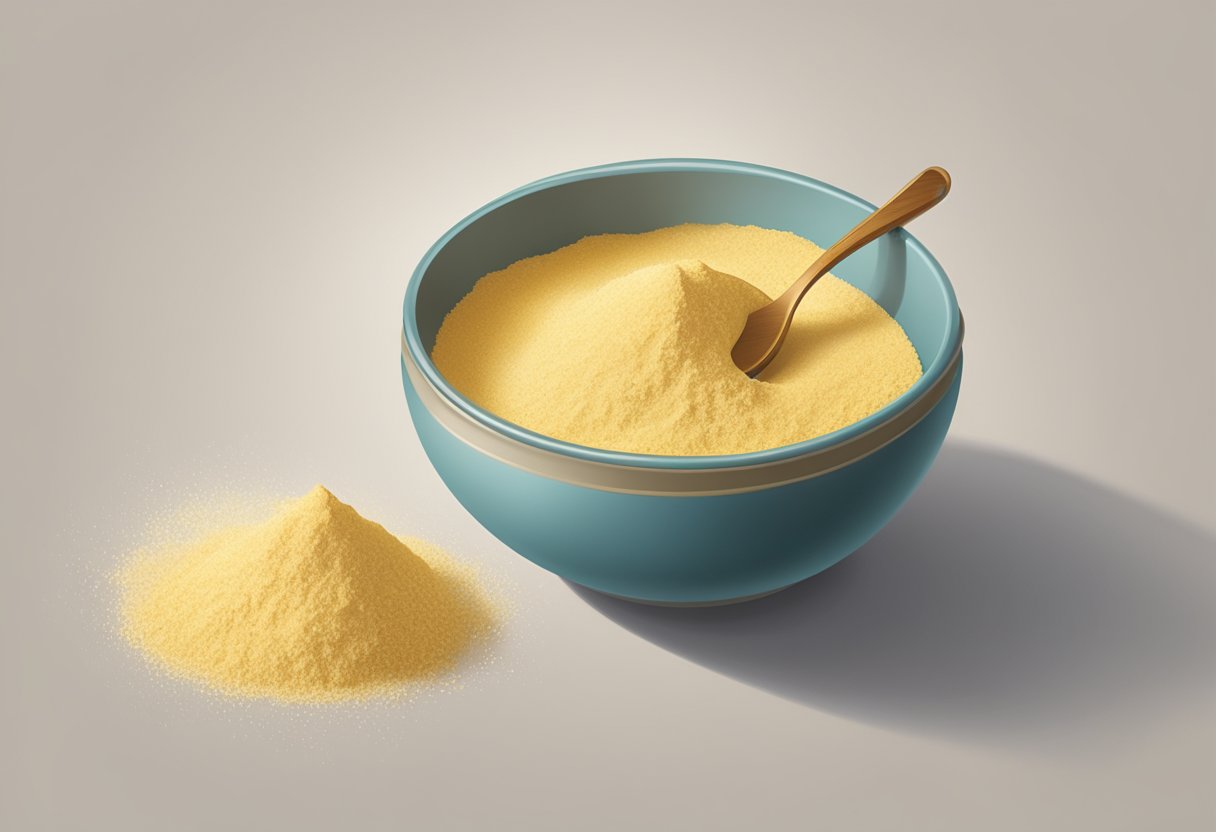
What are the steps to preparing a chickpea flour mask for acne-prone skin?
To prepare a chickpea flour mask for acne-prone skin, mix 1 tablespoon of chickpea flour with 1 teaspoon of honey and 1 teaspoon of lemon juice. Then, add enough water to make a paste and apply it to your face. Leave the mask on for 15-20 minutes before rinsing it off with warm water.
Can chickpea flour be used to create a mask for overnight treatment, and if so, how?
It is not recommended to use chickpea flour as an overnight treatment mask. Leaving a mask on your face for an extended period can cause irritation and dryness. It is best to use chickpea flour masks for 15-20 minutes and then rinse it off with warm water.
How can one achieve a glowing complexion using a chickpea flour face mask?
To achieve a glowing complexion using a chickpea flour face mask, mix 2 tablespoons of chickpea flour with 1 tablespoon of yogurt and 1 teaspoon of turmeric. Add enough water to make a paste and apply it to your face. Leave the mask on for 15-20 minutes before rinsing it off with warm water.
What is the recipe for a chickpea flour face mask suitable for dry skin?
To make a chickpea flour face mask suitable for dry skin, mix 1 tablespoon of chickpea flour with 1 tablespoon of honey and 1 tablespoon of olive oil. Add enough water to make a paste and apply it to your face. Leave the mask on for 15-20 minutes before rinsing it off with warm water.
In what ways does chickpea flour benefit the skin, particularly for skin whitening?
Chickpea flour contains vitamins and minerals that are beneficial for the skin. It helps to exfoliate the skin, remove dead skin cells, and brighten the complexion. The gram flour face mask is also effective in reducing pigmentation and dark spots, which can help to whiten the skin.
What is the method for using chickpea flour to lighten the skin tone?
To use chickpea flour to lighten the skin tone, mix 2 tablespoons of chickpea flour with 1 tablespoon of lemon juice and enough water to make a paste. Apply the paste to your face and leave it on for 15-20 minutes before rinsing it off with warm water. Repeat this process once a week for best results.

